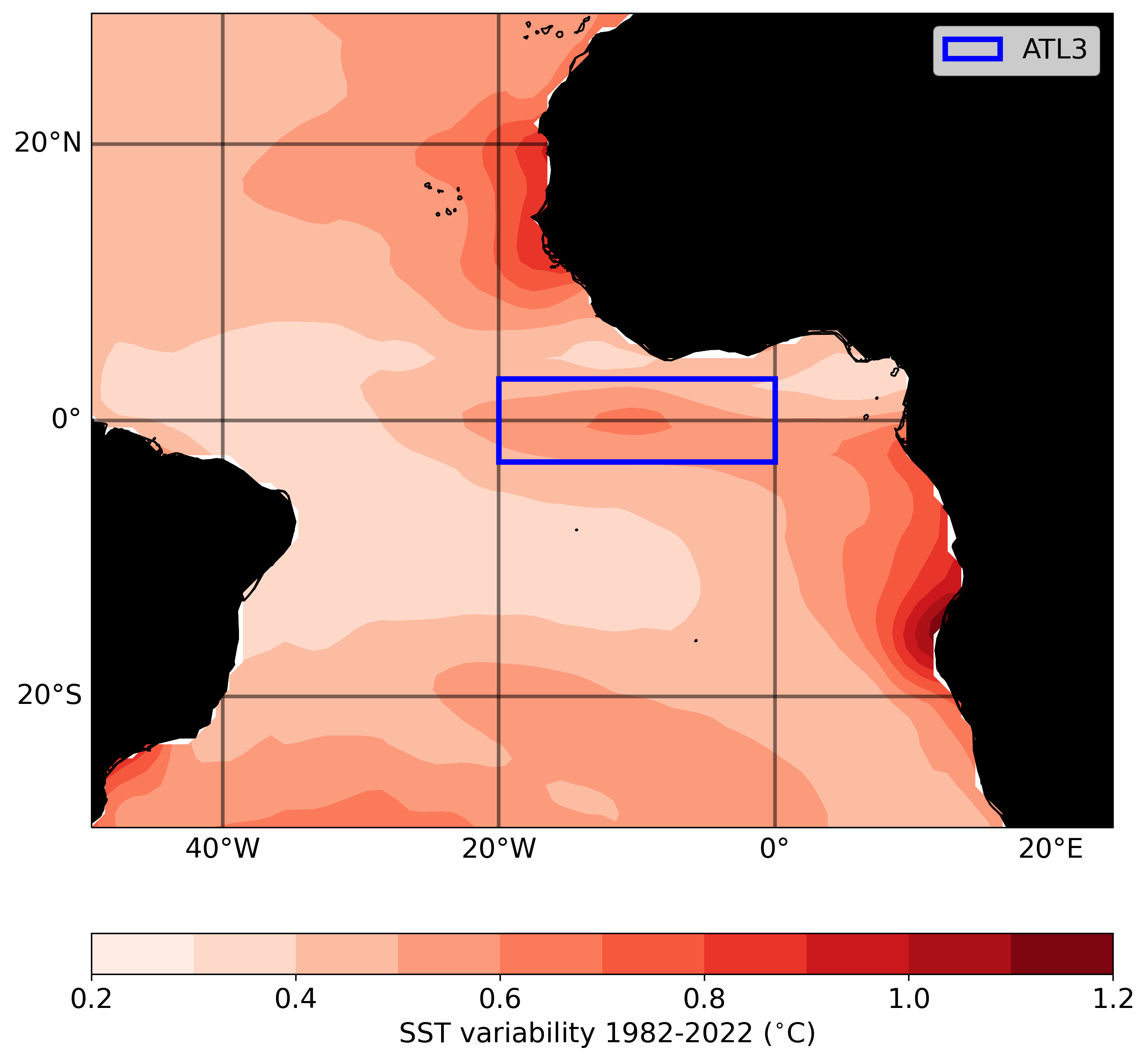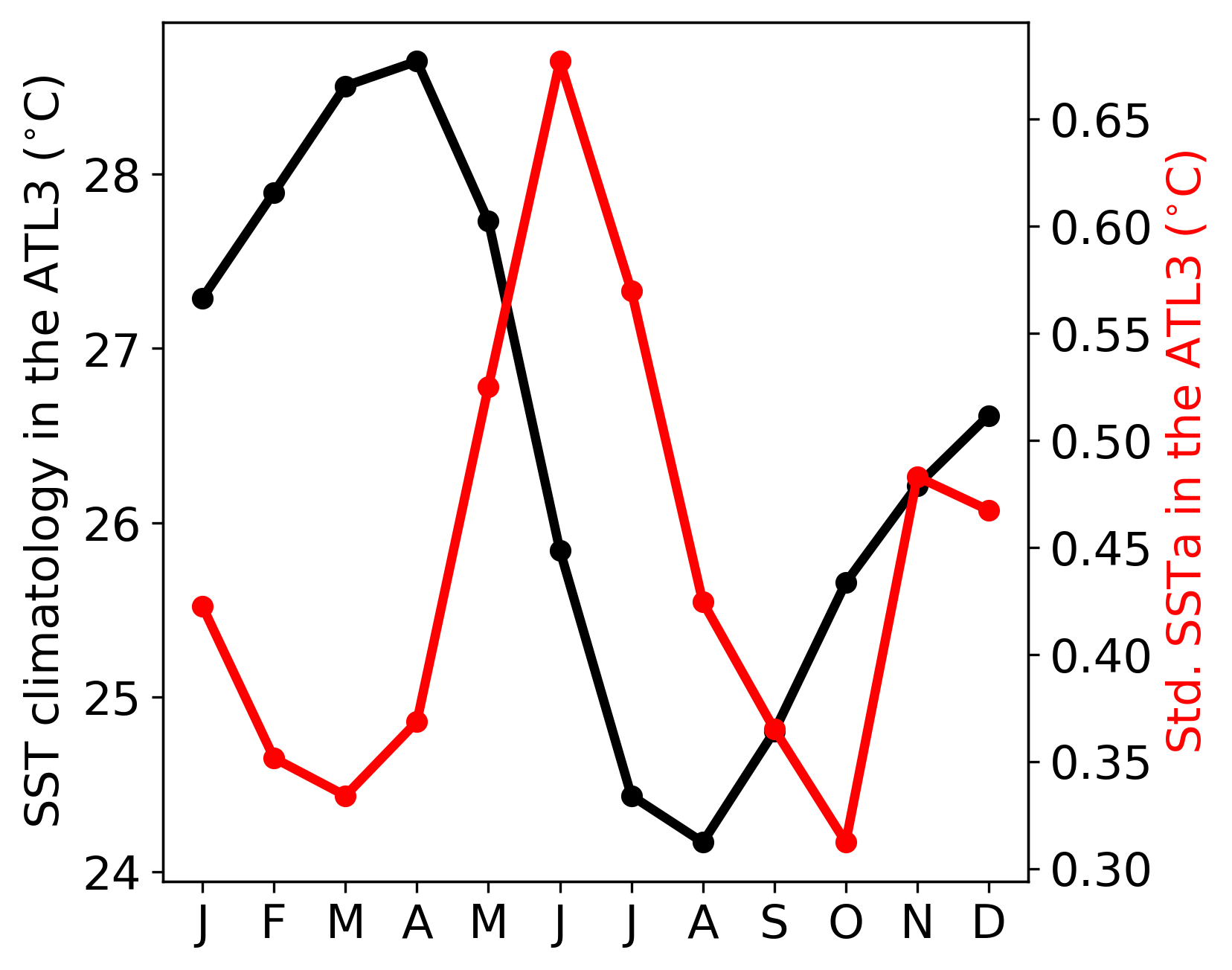Atlantic Niños?
What are Atlantic Niños?
Every few years the eastern equatorial Atlantic ocean is marked by large sea surface temperature (SST) deviations from its seasonal cycle. These deviations are named Atlantic Niños, which are extreme and accute events occuring in the ATL3 region (20˚W-0˚E; 3˚S-3˚N, blue box). An Atlantic Niño (Niña) is an extreme warm (cold) event, characterized by warmer (colder) sea surface temperature than normal.
 Figure 1. Standard deviation of the monthly mean SST anomalies calculated over the period 1982/01-2022/12. The blue box denotes the ATL3 region.
Figure 1. Standard deviation of the monthly mean SST anomalies calculated over the period 1982/01-2022/12. The blue box denotes the ATL3 region.
Typically, Atlantic Niños/Niñas occur in May-June-July (MJJ) as shown by the seasonal cycle of the standard deviation of the ATL3-averaged SST anomalies (Figure 2). The peak of variability occur during the development of the Atlantic cold tongue which generally occur in July-August-September. There is a secondary peak of SST variability in November-December known as the Atlantic Niño II (Okumara and Xie, 2006).
 Figure 2. Seasonal cycle of the ATL3-averaged (a) SST and (b) standard deviation of the SST anomalies using OI-SST over the period 1982-2022.
Figure 2. Seasonal cycle of the ATL3-averaged (a) SST and (b) standard deviation of the SST anomalies using OI-SST over the period 1982-2022.
Plotting a timeseries of detrended SST anomalies averaged over the ATL3 depicts the major Atlantic Niños/Niñas (Figure 3). We note that since the year 2000 fewer Atlantic Niños/Niñas occur as described by Prigent et al., (2020a).
 Figure 3. Timeseries of the ATL3-averaged detrended OI-SST anomalies. Anomalies were evaluated with respect to the climatology over the period 1982-2022. Red (blue) shades indicate that the SST anomalies is larger (smaller) than one standard deviation (0.45 ˚C).
Figure 3. Timeseries of the ATL3-averaged detrended OI-SST anomalies. Anomalies were evaluated with respect to the climatology over the period 1982-2022. Red (blue) shades indicate that the SST anomalies is larger (smaller) than one standard deviation (0.45 ˚C).
